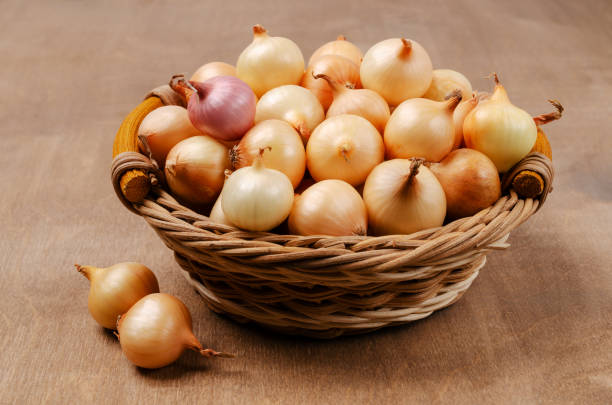Finding the best substitute for Spanish onion to garnish your loveable treats is pretty much easier. You can conveniently locate its alternatives in the supermarket aisles and allium sections, so don’t fear.
Spanish onion is a cultivar of yellow onion and seems an intermediate of yellow and brown onions. Unlike the usual kinds, Spanish onions are not so potent, have a less pungent aftertaste and floral aroma.
That’s a reason, this Spanish kind is entirely different in its culinary applications. Spanish onions are not preferred for cooking while popular as a garnishing ingredient. Want to know them in depth, continue reading.
What Is A Spanish Onion?
Spanish onion is a large round onion with a thin, dry, and papery peel. The skin varies in color may ranging from a yellowish shade to a milder brown hue. Its name indicates the origin where this onion was firstly cultivated, Spain. It is a type of yellow onion but quite distinct from its parent cultivar.
But why the Spanish onion is so popular? Well, there’s a reason behind. This kind of onion is milder in flavor and even some people perceive its flavor sweet enough to be eaten raw. Unlike to regular onions, Spanish onions are sweeter, less potent, and more versatile in terms of culinary applications. For instance, they are best for slicing, sauteing, baking, and garnishing a variety of cuisines.
Cooking caramelizes these onions and adds a umami richness to various sauces, soups, and casseroles. But they are not readily available in the market and are also pricey to get. This is because they are produced in Spain and then transported to other regions which makes their supply short and expensive to be shipped.
What Does A Spanish Onion Look Like?
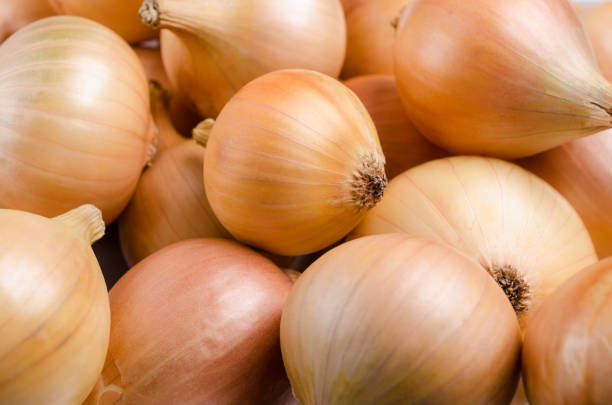
Spanish onions are not only extraordinary in their flavor but also in size and appearance. As stated earlier, Spanish onion is a cultivar of yellow onions, therefore are pretty much similar to grab. But Spanish onions are slightly larger and rounder than yellow onions. The dry papery skin is easier to peel with pale-yellow flesh.
Moreover, both are easily distinguishable when come to the flavor profile. Spanish onions are quite milder and sweeter with less potency while yellow onions have a sharp pungent flavor.
What Does It Taste Like?
Wondering about the taste of onion is ridiculous, but this Spanish onion is really different in taste it offers to a variety of food dishes. Unlike the usual pungent onion taste, Spanish onions are incredibly mild to taste and even sweeter on cooking.
That’s a reason they are so versatile in their usage and are used in bulb or green form. Professional chefs consider them as workhorse gems to garnish their savory treats.
Why Are Spanish Onions Sweet?
Spanish onion is considerably sweet and there are a couple of reasons behind this fact. First, as these onions grow, they develop a significant sugar content that ultimately makes them sweeter and less potent.
Second, onions are notoriously pungent for their higher sulfur content which makes them astringent to taste. It’s the sulfur that makes you cry while chopping and cutting onions but this is not the case for the Spanish variety. Spanish onions are significantly lower in sulfur, resulting in onions without any pungent aroma and flavor.
Read Also: Linguine Vs Fettuccine
Substitute For Spanish Onion
Whenever your dish calls for Spanish onion for garnishing and you have no, try the following substitutes. People also looking for closer alternatives to Spanish onion which are not as pricy as Spanish ones. Here’s you can find your best bet in terms of similarity and price convenience.
1. Yellow Onions
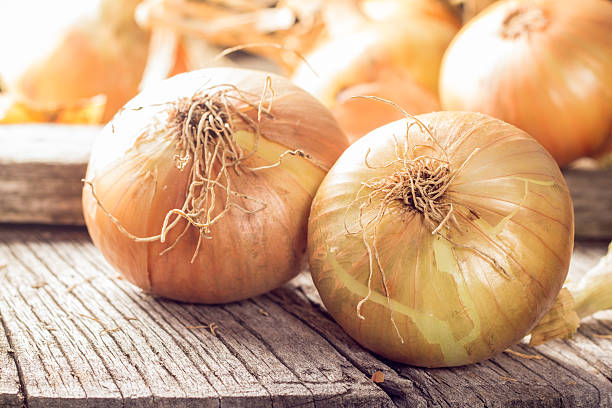
As yellow onion is a parent cultivar of the Spanish variety, you can easily substitute them interchangeably. Yellow onions are widely available, cheaper to afford, and remain in the pantry for longer. Similar to Spanish onion, yellow onions have dry papery skin that is easier to peel ranging from yellowish to pale brown hue.
However, they are quite different when come to flavor compatibility. Yellow onions are extensively grown in high-sulfur soil and thus developed a potent flavor and astringent aroma, therefore not good for garnishing.
But cooking significantly reduces the sharp flavor of yellow onions and makes them milder, tender, and caramelize. So, if you have it on hand, make a palatable substitution and enjoy.
2. Sweet Onions
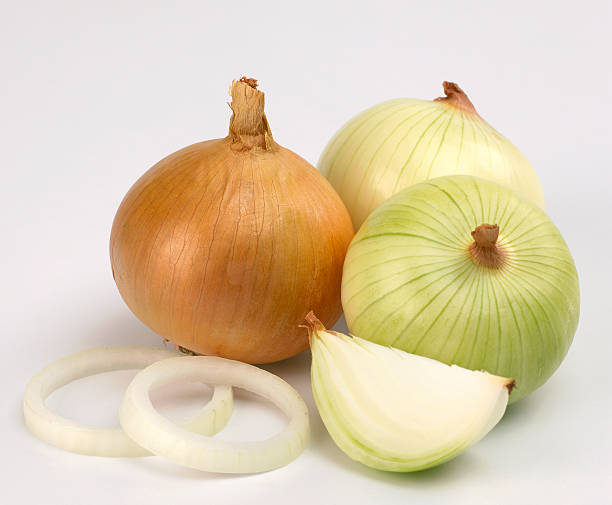
Sweet onions can replace Spanish onions in terms of mild sweet flavor. Therefore, you can eat them raw, slice them for garnishing, sauteing, and grilling. Their smooth delicate flavor makes them an irresistible choice instead to Spanish ones.
They also go great in stews, soups, relishes, and so many other onion dishes. So, if you are getting short on Spanish onions, replace them with relatable sugary yet aromatic sweet onions in equal amounts.
3. Walla Walla Onions
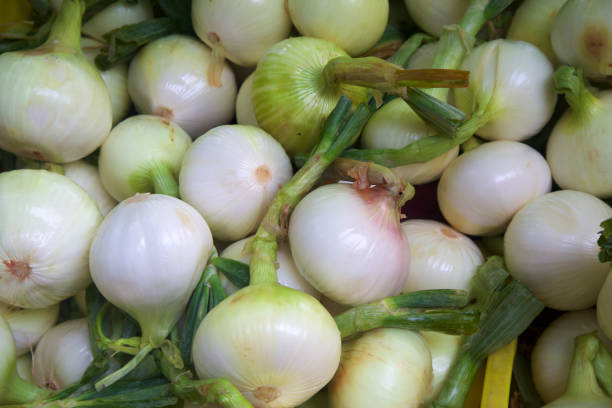
Walla Walla onions are well known for their mellower yet complex crispy bite. They are sweet, delicately juicy, and a little bit grainer to taste. Their cooking time is lower but are still exciting substitutes for Spanish onion. Their mildly sweet flavor nicely pairs with casseroles, stews, sauces, and salads. However, they are sometimes challenging to find in various regions. But if you find them, go for a deliciously comfort food.
4. Vidalia Onions
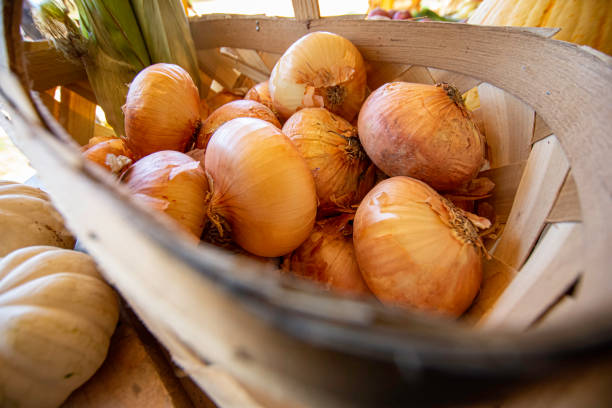
Vidalia onions, as a kind of sweet onions, can successfully substitute Spanish onions in savory as well as sweet recipes. They are similarly milder, sweeter and aromatic with thicker skin as compared to Spanish ones. But this apparent difference is welcomed when nothing else is ready to be used in place of Spanish onion. Slice them for garnishing, salads, sauteing or grilling to meet your tongue flavor incredibly.
You may also like: Can I Use Yams Instead of Sweet Potatoes?
Spanish Onion Vs Yellow Onion
Spanish onion and yellow onion are closely related but are still vastly different from each other. You can point them apart by their distinct appearance easily. However, they also have different aroma and flavor profile.
Spanish onions are larger, dry, and rounder than yellow ones.
Yellow onions are more potent, sharper, and stronger to taste while the Spanish variety is milder, sweeter, and delicate to taste. Spanish onions also have lower sulfur content than its competitors. Therefore, cutting and chopping yellow onions make you cry while Spanish onions are easier to chop.
Spanish onions are preferred for raw eating, topping, and garnishing while yellow onions are best for cooking and sauteing purposes.
Spanish Onion Vs Sweet Onion
Although Spanish onions are categorized as sweet onions, they are not the same. In fact, sweet and Spanish are entirely different cultivars of onions.
Sweet onions are sweeter, delicate, and juicier than Spanish ones. However, Spanish onions are mellower, tender, and crispy to bite.
Sweet onions are far lower in sulfur yet higher in sugar than Spanish onions. They are also widely available and cheaper to buy as compared to Spanish ones.
But they both are ideal for garnishing, topping, salads and raw eating. You can also substitute one for another in almost all savory as well as sweet recipes.
Read Also: Saffron Rice Substitute
Where To Buy Spanish Onions?
When in season, Spanish onions are easily available in the supermarket and grocery stores. To be exact, you’ll find your lovable onion in the allium section in its peak season. Usually, Spanish onions are harvested during midsummer and therefore you can get them in months from July to September.
Besides, few grocery stores also offer stored or frozen Spanish onions even when they are not in season. These packed onions are also good to go and taste better.
However, a confusing issue is that some supermarkets categorize Spanish onions as yellow onions and named them so. It’s time when the understanding of the difference between Spanish and yellow onions comes into play.
How To Store Them?
Proper storage of Spanish onions is key to use them longer because they tend to go moldy and rot readily as compared to their other peers. This is because they have high water and sugar content.
Generally, they can last 4 to 5 days at room temperature if placed away from sunlight. Always ensure enough ventilation and a cold place while storing these onions. Storage in a basket or paper bag can last them more than a week.
Avoid refrigeration because the far lower temperature will soften the onions and make their flavor unappealing. However, you can store Spanish onion cuts or pieces in the refrigerator after sealing them in an air-tight glass container. This way, you can use them later without losing their actual flavor and aroma.
FAQ’s
Are Spanish Onions Good For Cooking?
It’s up to you whether you want to toss them in a cooking dish or eat them raw. However, their sweet mellower flavor makes them a perfect choice for raw eating. They are also best for sauteing and grilling but prolong cooking can ruin their characteristic texture. They also respond well to caramelizing and light cooking.
Will Chopping Spanish Onions Make You Cry?
Generally, Spanish onions don’t make you cry because they are much lower in sulfur and other potent substances. Their high sugary content and floral aroma doesn’t cause tear unlike regular cultivars of onions.
Can You Substitute Spanish Onion With Regular Onion?
And the answer is no, you can’t. Regular onions are quite pungent and offer a sharp astringent bite. They are also higher in sulfur and low in sugar. Therefore, substituting them in place of Spanish onion will ultimately ruin the overall recipe flavor.
